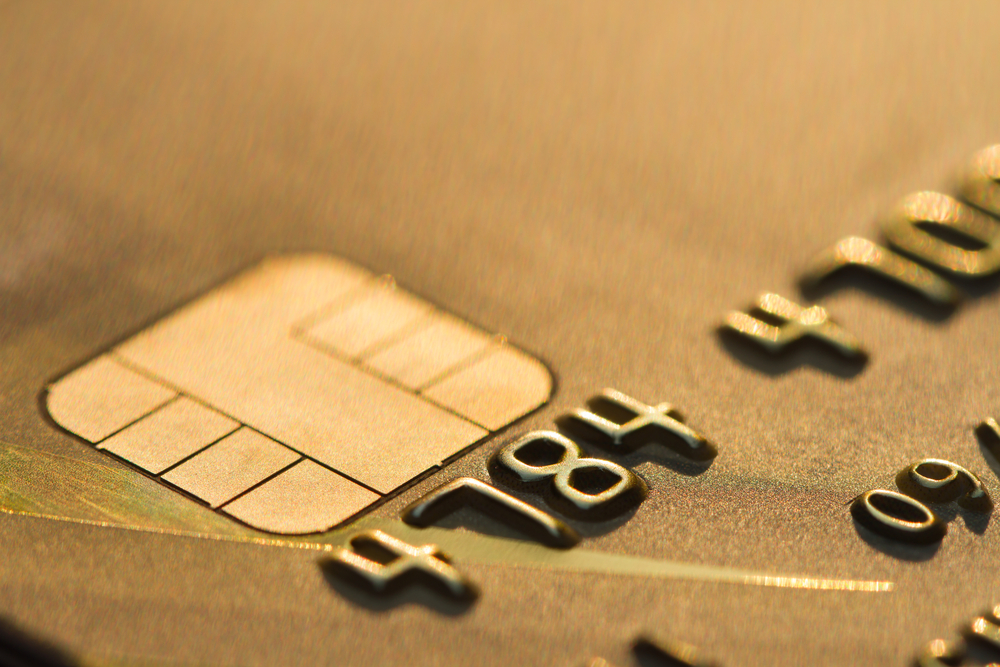
WITH CONTACTLESS NEXT, ARE WE DONE PAYING FOR EMV?
Issuers and merchants have already spent billions of dollars on the transition to EMV technology. Card issuers spent an average of $3.5 to issue each new card, and merchants spent $500-$1,000 to upgrade a single payment terminal.
And yet, following the devastating 2013-2014 data breaches that plagued big merchants like Target, Home Depot, Neiman Marcus and many more, the promise of increased security and reduced fraud was enough to push the EMV migration past the tipping point.
True enough, now the shift to EMV and chip-card transactions is nearly complete, with 70 percent of consumers carrying a chip card. There is a consensus that within two years the market will have reached nearly 100% EMV cards.
But the chip cards issued by most U.S. banks today are not the last word in card payments, and the upgrade to the latest technology EMV is upon us: Contactless EMV. Contactless EMV cards are secure chip cards with a small antenna, which cardholders can tap on the reader instead of inserting it.
Does this new generation of cards mean that the industry is actually not done paying for EMV?
THE BEGRUDGING CHIP CARDHOLDER

The new chip cards have downgraded the checkout process with something clunky and slow. While the authorization behind the scenes takes the same time, the user experience got worse – it feels slower. Consumers sigh and roll their eyes as they “dip and wait”, holding their wallets open, staring at the terminal and waiting for the prompt to remove the card.
Issuers and payment brands had anticipated that consumers would react by rushing to embrace the new NFC mobile wallets that allow faster tap-and-go checkout. But in reality U.S. consumers are sticking to their plastic cards.
It turns out that pulling out a card from a wallet is a practice so ingrained with consumers and the security concerns about mobile still nagging, that customers are persevering with their new EMV cards despite the less than ideal experience.
No one has told U.S. consumers what hundreds of millions of people around the world already know. That is, that cards can be contactless, too. Cardholders can have all the benefits of EMV security plus a faster checkout using contactless EMV (or “dual-interface”) cards.
Contactless EMV cards are being adopted massively for both debit and credit across the globe:
- In Canada, more than 56 percent of consumers aged 18-44 prefer to use a contactless card to make purchases
- 66 percent of Australians say contactless is now their preferred payment method
- In Asia, 70 percent of all smart payment cards shipped in 2015 featured contactless technology
- In China, 90 percent of all newly issued cards are contactless
- In Europe, regulation mandates that by 2020 all POS terminals must be contactless enabled
HOW MUCH WILL THE NEW CONTACTLESS EMV CARDS COST ISSUERS?

After bearing the reissuance cost of hundreds of millions of cards, naturally issuers are concerned with the potential cost of issuing the more advanced dual interface cards. In addition to a specialized chip, these cards have an antenna built-in to allow tap-and-go.
With all the innovation that exists today for cards and innovative plastics, price ranges can vary drastically. But on average, it will cost the same to add contactless to an EMV card as it did to issue chip cards in the first round of EMV.
Moreover, the business case or ROI (return on investment) for contactless EMV cards is extremely strong, and has been proven time and again in countries with similar card habits to the U.S. like Canada, the U.K. and Australia. Contactless cards generate incremental spend over their dip-only counterparts.
For the U.S. market, contactless cards create three revenue accelerators:
1. Increased spend
The transition from chip to contactless EMV has consistently produced an interesting phenomenon. Customers use their cards more when they are contactless. In 2012, MasterCard observed a spending increase of almost 30 percent on U.S. cards with tap-and-go features. Tap-and-go has proven very friendly to no-nonsense, low value transactions, and it tends to encourage customers to use their cards even for small payments and make more transactions.
This behavior is consistent across low, medium and high spenders, demonstrating the broad appeal of these new cards. Contactless cards are accessible by nature across demographics, because they present such a minimal learning curve.
Older populations, which might hesitate to adopt digital payment channels like mobile, have no problem with contactless cards. In the UK, Barclaycard said it had seen a 173 percent increase in contactless spending by its customers this last year, with the over-60s showing the biggest rise.
2. Improved customer retention
With the credit card business being so competitive, customer stickiness is the Holy Grail. It costs $80 to acquire a new customer, so it’s never been more important to have a strong program in place to keep customers active and using the card on a regular basis.
The effort pays off, though, because loyal customers spend more per year, have higher retention rates, tolerate higher fees and interest rates, and are less costly to serve.
Customer satisfaction is a key ingredient in that mix. When you provide a customer with a card that allows them to check out faster, without compromising security, you are providing a huge benefit that other cards do not. And that can be another significant factor in customer retention.
The average American carries 3.7 credit cards in their wallet. Those cards can already be used at more than 2 million locations, with the number of contactless locations rapidly climbing year over year. The contactless card that delights a consumer once at a contactless-enabled location, is going to be the card they return to over and over.
3. Targeted digital strategy
1 out of 3 salaries today is earned by a Millennial, a digital native who expects to be served with innovative digital products delivered on digital channels. Issuers know a digital strategy is an imperative for any growth-seeking financial institution, and have designated digital owners across product, marketing and technology functions.
Contactless EMV cards act as the cornerstone of the digital payment strategy, easing the payment transition from plastic to full-on digital devices like mobile phones, smart watches, and connected cars. Tap-and-go cards educate customers on the gestures and habits of digital payments, while using the familiar plastic form factor.
While we may imagine that Millennials are ready to leapfrog plastics altogether and pay directly on mobile, that perception might not be accurate. As evidence, we can look to the rather low uptick of mobile wallet adoption.
Contactless cards can help meet a craving for convenience and speed, while the general public is not yet ready for mobile. This is the way it’s played out in Australia, which has the highest use of contactless credit and debit cards in the world, and where cardholders are still reluctant to adopt mobile wallets.
THE BEST PORTFOLIOS FOR CONTACTLESS EMV CARDS
Top-of-wallet status is driven by rewards in the US, whether it’s cashback, miles or points. So, it’s hard to imagine someone stopping use of their go-to credit card just because it’s not contactless yet.
That said, issuers can increase the stickiness of a winning rewards card by making it contactless as well, basically marrying everyday rewards with everyday convenience and speed, to solidify that favored position.
The best suited portfolios for contactless are everyday rewards, meaning the cards that reward your customers the most for their recurrent purchases, in categories like grocery, pharmacy, gas stations, and restaurants. For example, Citi recently issued their new Costco credit cards as contactless.
Contactless EMV cards that allow the speed and convenience of tap-and-go are a competitive differentiator for the first movers in these categories.
Travel reward cards also play very favorably as a contactless portfolio, as the convenience and speed provided with tap-and-go payments is well aligned with similar new technologies at airports, hotels, and tradeshows. Mobile boarding passes, smartphone room keys, RFID conference badges, are all examples of how fast, digital everyday transactions are important to these cardholders, and hence a good match for contactless cards.
Commencing EMV Phase 2
One year after the EMV migration, we cannot say that it is conclusively over. While the first phase focused on equipping consumers and merchants with chip cards and readers, respectively, we are now entering the second phase. The second phase will be focused on improving the cardholder experience, and that is done with contactless cards and mobile payment.


